Announcing Spring 2022 PEAK Experiences Awardees
Several engineering students and science students mentored by COE faculty are recipients of Northeastern’s Spring 2022 PEAK Experiences Awards. The PEAK Experiences Awards are a progressively structured sequence of opportunities designed to support learners as they continue climbing to new heights of achievement in undergraduate research and creative endeavor throughout their Northeastern journeys.
| BASE CAMP AWARDS |
|---|
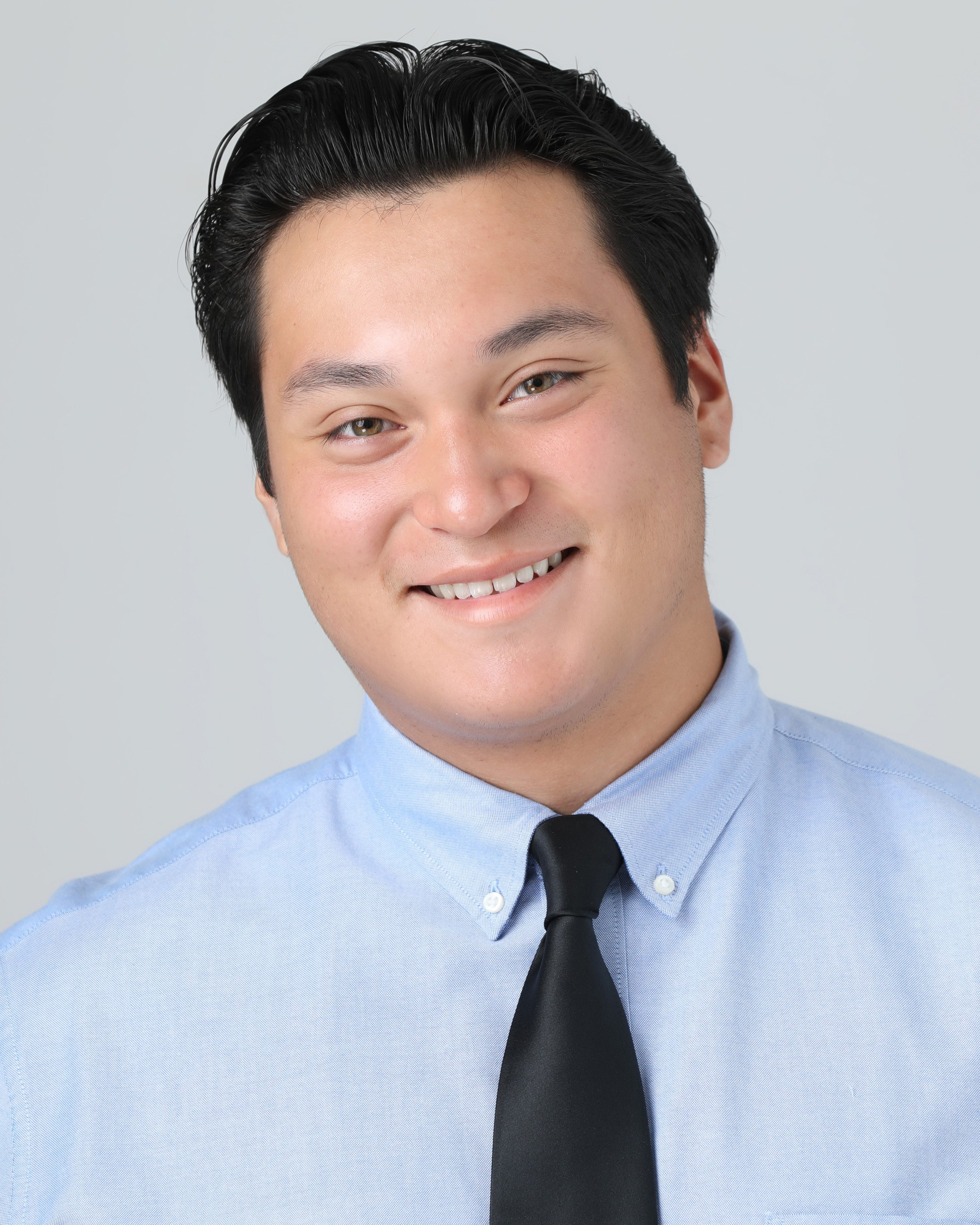 Diego Acosta, COE’26, “Soft Active Materials” Diego Acosta, COE’26, “Soft Active Materials”Mentor: Ruobing Bai, COE, Mech. & Industrial Engineering My aim is to understand the mechanics behind soft active martials (i.e., hydrogels, liquid crystal elastomer, and biomaterials) by utilizing theory and experiments to address soft active materials multifunctionality in different applications. Methods include multiphysics modeling and multiscale experimental characterization. |
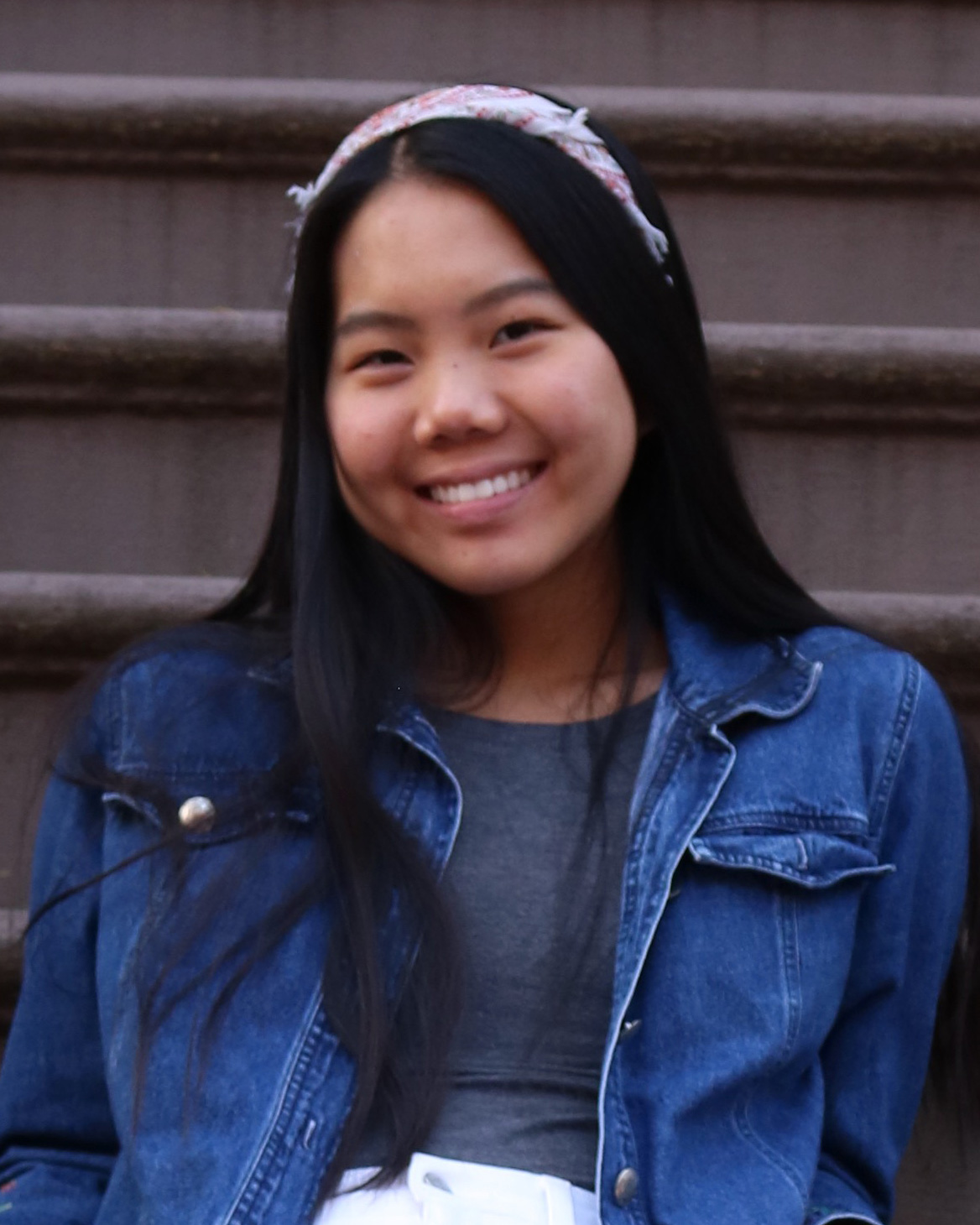 Isabel Cui, COS’23, “Tree-Dom in Throughfall vs. Stemflow” Isabel Cui, COS’23, “Tree-Dom in Throughfall vs. Stemflow”Mentor: Aron Stubbins, COS, Marine & Environment Sciences The goal of this project is to understand the transport and impact of dissolved organic material within Northeastern’s diverse arboretum. The hydrological pathways of throughfall and stemflow in trees will be studied to track how nutrients, microbes, and other factors are moved through ecological cycles. |
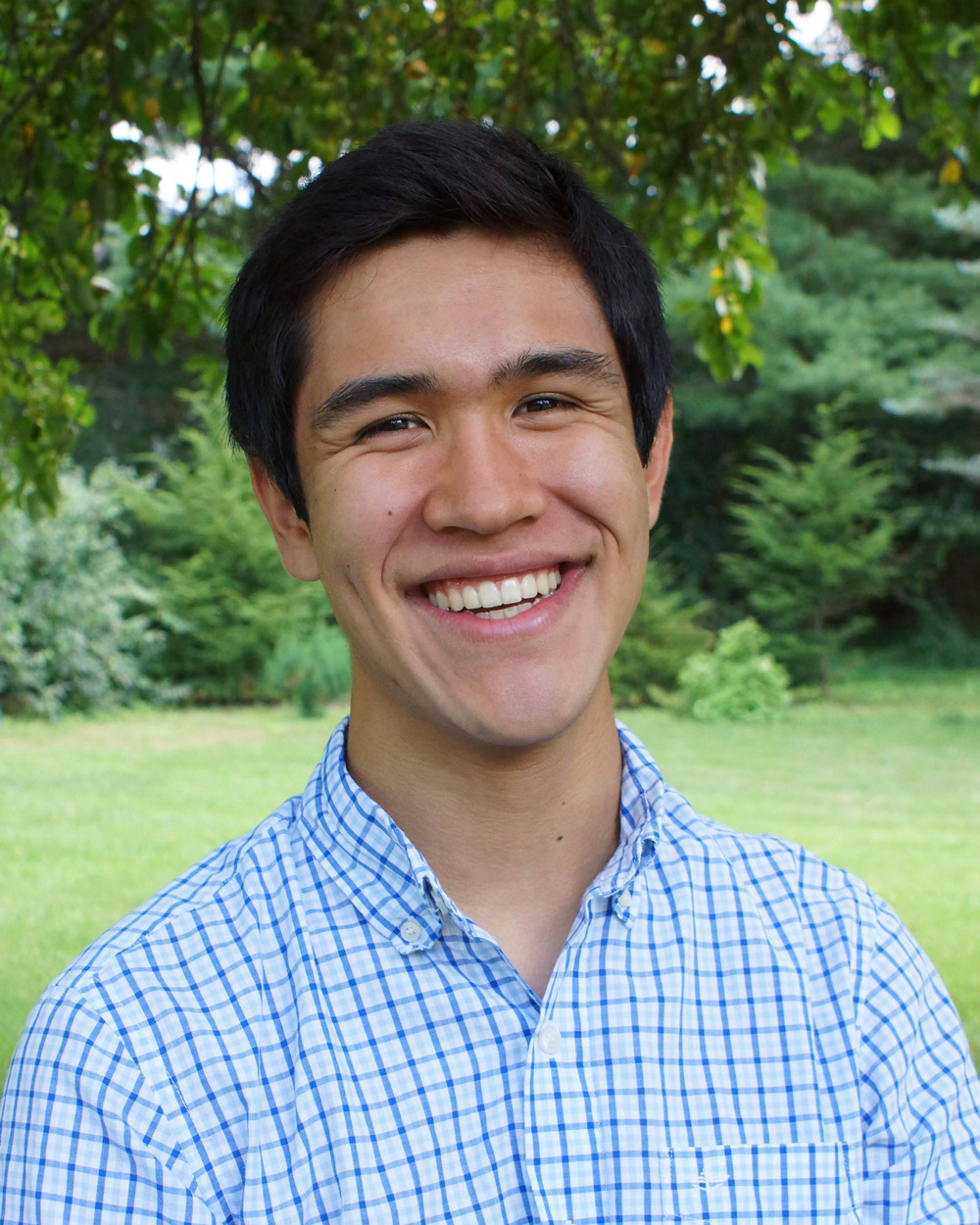 Jason Denoncourt, COE’23, “Identifying DNA Binding Motifs of a Novel Fatty Acid Metabolism Regulator in Acinetobacter baumannii” Jason Denoncourt, COE’23, “Identifying DNA Binding Motifs of a Novel Fatty Acid Metabolism Regulator in Acinetobacter baumannii”Mentor: Edward Geisinger, COS, Biology This project will utilize an electrophoretic mobility shift assay (EMSA) to identify DNA binding motifs of AlmC, a novel fatty acid metabolism regulator in the superbug Acinetobacter baumannii. While prior ChIP-seq data predicts several targets, EMSA allows for further verification in vitro and higher specificity of the DNA binding motifs. |
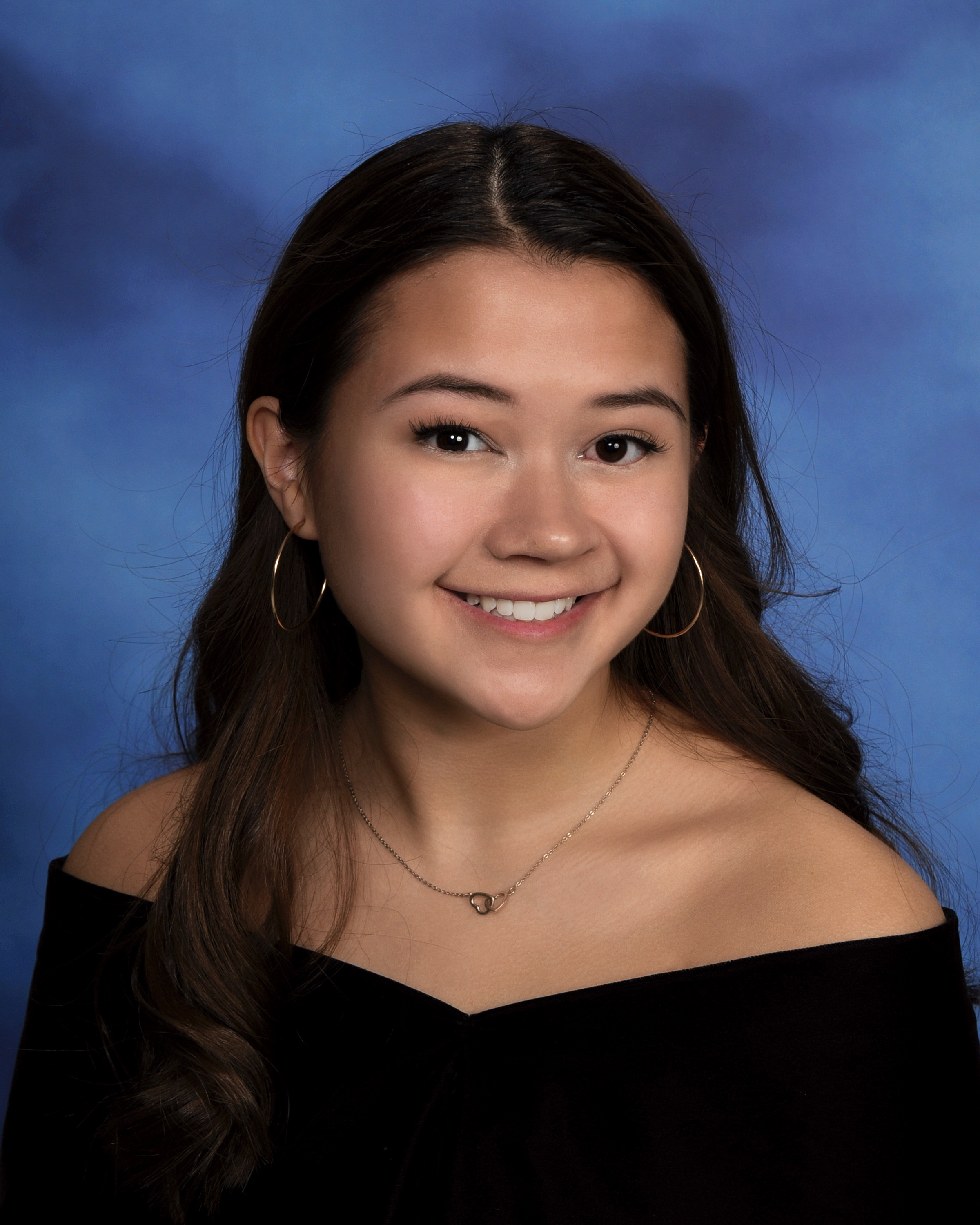 Emily Heneghan, COE’24, “Enhancing Circular Economy in the Water and Waste Industry” Emily Heneghan, COE’24, “Enhancing Circular Economy in the Water and Waste Industry”Mentor: Annalisa Onnis-Hayden, COE, Civil & Environmental Engineering I hope to engage more deeply with biological processes that promote sustainable waste and wastewater management practices, by working with, quantifying, and analyzing potential anaerobic digestion processes to characterize how waste can be recovered as biogas for energy. |
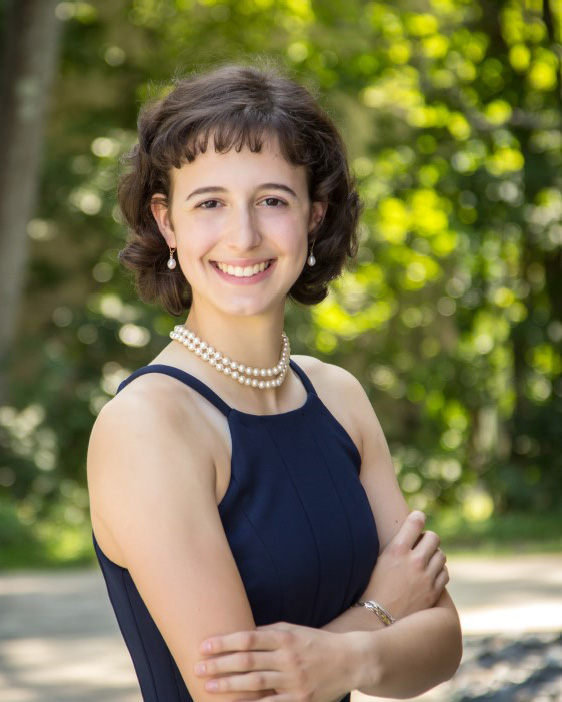 Paola Kefallinos, COE’23, “Implementation of Control Algorithms on Pololu Robots” Paola Kefallinos, COE’23, “Implementation of Control Algorithms on Pololu Robots”Mentor: Rifat Sipahi, COE, Mechanical & Industrial Engineering The goal of this semester’s work is to design and create a testing platform to compare the real-life behavior of control algorithms against simulation results. |
 Anna Lunger, COE’26, “Creating Autonomous Sulfide-Producing Microbes for Gut Research” Anna Lunger, COE’26, “Creating Autonomous Sulfide-Producing Microbes for Gut Research”Mentor: Benjamin Woolston, COE, Chemical Engineering The effects of hydrogen sulfide on gut health are controversial, but past research suggests the effects are concentration-dependent. We hope to engineer E. Coli that can produce hydrogen sulfide from an internal biomolecule. The goal is that these microbes can reveal how various sulfide levels affect gut health. |
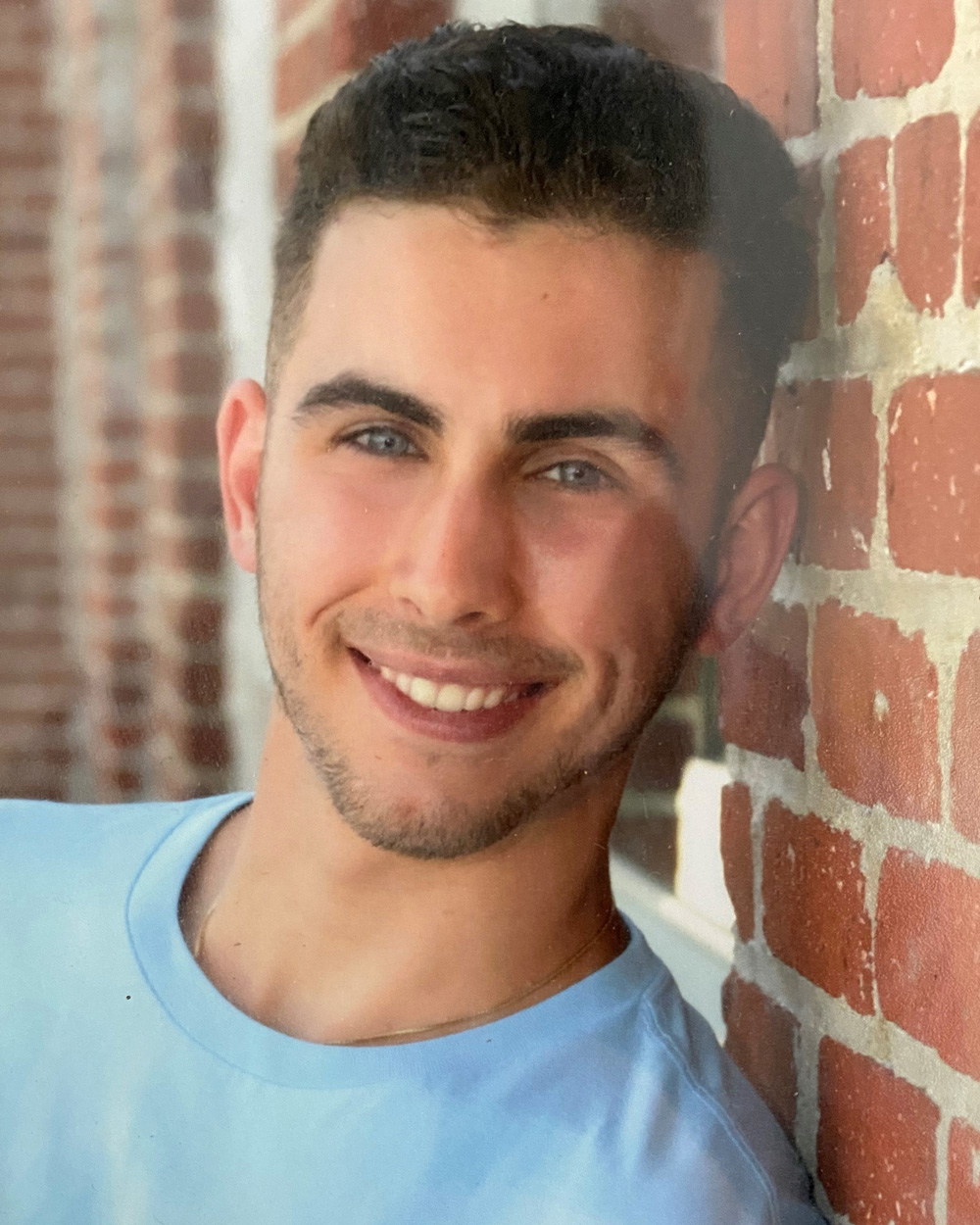 Dominic Pizzarella, COE’26, “Designing and Optimizing an Electrical Stimulation Platform for Neural Regeneration” Dominic Pizzarella, COE’26, “Designing and Optimizing an Electrical Stimulation Platform for Neural Regeneration”Mentor: Ryan Koppes, COE, Chemical Engineering My research will consist of a combination of 3D printing and laser cutting to create a platform that nerve cell electrodes can attach to. It will involve the treatment of nerve and sciatic cells as well as the assembling of organ on chip technology. |
 Anthony Zappala, COE’26, “Organ-Chip to Study Conductive and Non-conductive Hydrogel Interfacing” Anthony Zappala, COE’26, “Organ-Chip to Study Conductive and Non-conductive Hydrogel Interfacing”Mentor: Ryan Koppes, COE, Chemical Engineering The purpose of this research is to develop an organ-chip model containing both a conductive and non-conductive hydrogel. Each hydrogel will be cultured with neurons to determine how conductive and non-conductive types of hydrogels interface and lead to different measurements in neuron activity. |
| ASCENT AWARDS |
 Carolina Aguilera Barraza, COE’24, “Alternative Eco-Friendly Pigments” Carolina Aguilera Barraza, COE’24, “Alternative Eco-Friendly Pigments”Mentor: Leila Deravi, COS, Chemistry & Chemical Biology This project consists of the discovery and assessment of naturally occurring pigments for skincare applications. This project is of significance because it will be a step forward in cosmetics becoming sustainable and safe for both the consumer and the environment. I will create simple water-based formulations and test their optical properties. I will continue the experiment by doing my own independent research to find materials that expand the scope of what is available in the lab now. The anticipated outcomes will be a new suite of eco-friendly colorants and a step forward into a sustainable future. |
 Justin Almendral, COE’24, “Wearable Art” Justin Almendral, COE’24, “Wearable Art”Mentor: Victor Zappi, CAMD, Music This interdisciplinary arts project brings together faculty from music, theatre, art and design, and games to collaborate on a dynamic, kinetic wearable sculpture with musical components produced with a combination of textiles and 3D printed materials. originally conceived for the The World of Wearable Art Competition in Wellington, New Zealand. This will involve iteratively modifying digital files to generate kinetic models on a 3D printer, working with the design and textile team to integrate them into the final piece. We aim to have a working prototype completed for Northeastern’s RISE Research Showcase and one or more papers about the project. |
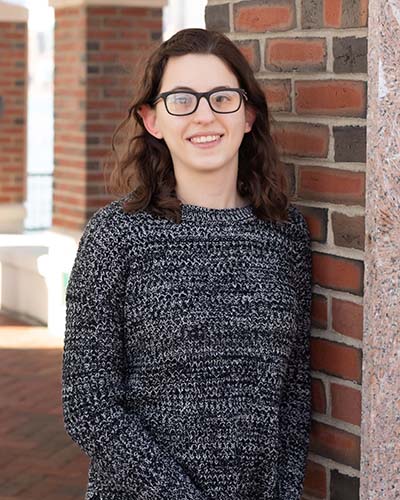 Abigail Bemis, COE’24, “Determining Affect of Weight Shifting to Develop New Dynamic Standing Frame” Abigail Bemis, COE’24, “Determining Affect of Weight Shifting to Develop New Dynamic Standing Frame”Mentor: Sandra Shefelbine, COE, Bioengineering Patients with conditions that limit their ability to stand and walk are at an increased risk of osteoporosis and the complications it causes. Currently, standing frames that allow these patients to bear weight on their legs reduce these risks exist, but their affects are limited. Research shows that a standing frame that allows for more dynamic bone loading will lead to better outcomes. This project aims to conduct research on dynamic bone loading that will improve the design of a dynamic standing frame. |
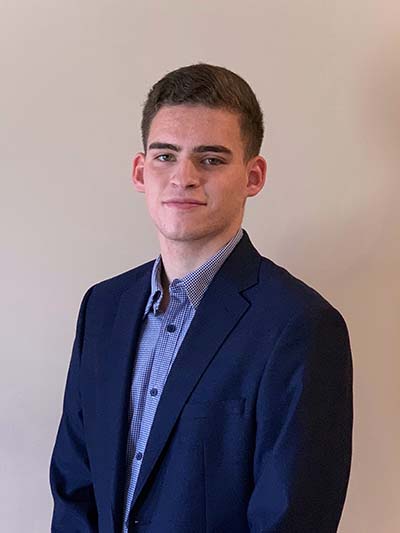 Austin Birmingham, COE’23, “Microscopic Visualization of Immune Response and Morphology Changes in Mice Models of Alzheimer’s Disease” Austin Birmingham, COE’23, “Microscopic Visualization of Immune Response and Morphology Changes in Mice Models of Alzheimer’s Disease”Mentor: Abbas Yaseen, COE, Bioengineering This project aims to visualize neuroimmune responses and morphological changes in brains of mice models of Alzheimer’s disease. The goal is to advance our understanding of AD’s preclinical neuroimmune, microvascular, and metabolic alterations, and the beneficial mechanism of physical activity. Extensive knowledge of AD pathology is essential to develop robust, early strategies for diagnosis, prevention, and therapy. I will develop and refine the methodology to image harvested mice brains using confocal and light-sheet microscopy which will allow for microscopic analysis within regions of the brain that are inaccessible via in vivo optical microscopy. The results will be presented at RISE. |
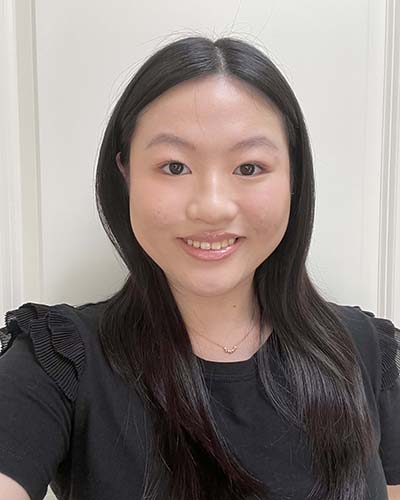 Sandra Chai, COE’26, “Effects of Annealing on Through-Plane Thermal Conductivity in Shear Aligned Composites Created via Fff” Sandra Chai, COE’26, “Effects of Annealing on Through-Plane Thermal Conductivity in Shear Aligned Composites Created via Fff”Mentor: Randall Erb, COE, Mechanical & Industrial Engineering This research aims to achieve maximal thermal conductivity and enhanced annealing in fused filament fabrication parts through the creation of a shear aligned particle-filled, polymer matrix composite system. A composite possessing high thermal conductivity and low electrical conductivity would have a myriad of applications in electronics acting as a novel heat sink and in 3D printing where it would enhance heat transfer between printed layers during the annealing process to improve the final strength of printed parts. This work will be shared through a RISE poster and will culminate in the publication of a paper in an academic journal. |
 Jonathan Chen, Khoury’25, “Development of Secure Web Authentication for Open Source Educational Software” Jonathan Chen, Khoury’25, “Development of Secure Web Authentication for Open Source Educational Software”Mentor: Joshua Hertz, COE, Mech. & Industrial Engineering This project looks to update the gruepr team optimization software to include complete web integration. It will involve the implementation of OAuth2 to allow the user to directly access the information associated with their Google or Canvas account. With the integration in place, the process of sorting students into groups will be streamlined so that the instructor using the application can retrieve rosters, collect data, and upload groups automatically. Along with a presentation at RISE, we plan to create a presentation and a proceedings paper at an upcoming American Society for Engineering Education conference. |
 Margaret Clark, Provost’25, “Addressing Food Insecurity in Boston” Margaret Clark, Provost’25, “Addressing Food Insecurity in Boston”Mentor: Kayse Maass, COE, Mechanical & Industrial Engineering My project Addressing Food Insecurity seeks to determine holistic measurements of food insecurity. Currently, most data about food insecure people takes into account just one variable, such as their distance from a food retailer. However, causes of food insecurity are incredibly diverse and are part of complex social systems. We want to develop models which measure urban food insecurity that take into account every necessary variable, in order to provide better recommendations for improving food justice. I would love to share my work at RISE and at the Scholarship and Social Justice Undergraduate Research Conference in April 2022. |
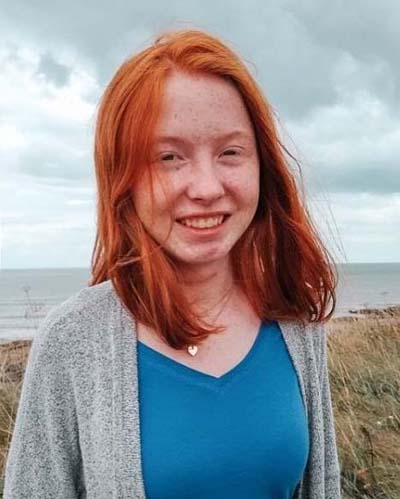 Angela Fee, COE’23, “How Cells Sense the Stiffness of Their Environment” Angela Fee, COE’23, “How Cells Sense the Stiffness of Their Environment”Mentor: Anand Asthagiri, COE, Bioengineering Cells attach to their environment to sense stiffness and facilitate migration on their surrounding matrix. The cytoskeleton of the cell adheres to receptors that are bound to the exterior matrix. The purpose of this project is to mathematically model how the binding behavior and amount of stress on these attachments change with stiffness. Quantifying the mechanisms by which cells sense and respond to the stiffness of their surroundings will broaden our understanding of how stiffness can impact cancer metastasis, cell proliferation, and differentiation. I will share project findings at RISE, external conferences, and in a future publication. |
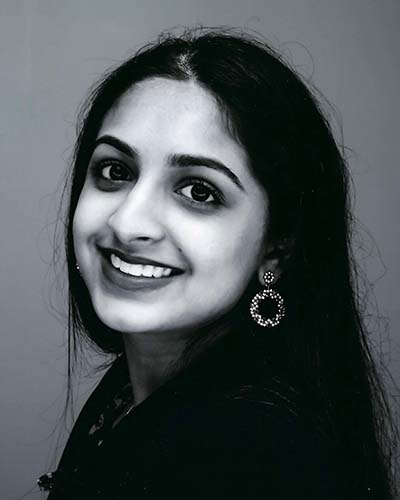 Shanthi Hegde, COS’25, “Biosensing Hydrogen Sulfide (h2s) Utilizing Sulfide Quinone Oxidoreductase’s Homolog in Wolinella Succinogenes to Integrate into a Novel Sulfide Biosensor for Therapeutics in Ibd” Shanthi Hegde, COS’25, “Biosensing Hydrogen Sulfide (h2s) Utilizing Sulfide Quinone Oxidoreductase’s Homolog in Wolinella Succinogenes to Integrate into a Novel Sulfide Biosensor for Therapeutics in Ibd”Mentor: Benjamin Woolston, COE, Chemical Engineering The presence of Hydrogen Sulfide in high concentrations in the gut microbiome causes disruption of the mucus membrane contributing to IBD and colon cancer. Utilizing Sulfide Quinone Oxidoreductase’s (SQR) homolog in anaerobic Wollinella succinogens, the project aims to sense Hydrogen Sulfide in the gut to maintain sulfide homeostasis. Polysulfides will be quantified utilizing the amplification of Wolinella in PCR, organism sequencing, and a Hot Cyanolysis assay for collecting polysulfide concentration. Ultimately, we hope to integrate the SQR homolog into a novel Sulfide biosensor to detect Polysulfide concentrations in the gut. This research will be presented at RISE, AiChE, and ACS. |
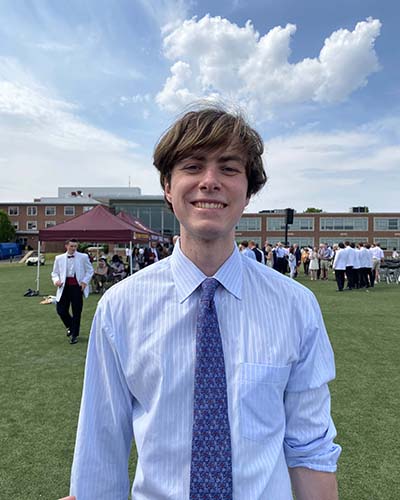 Nicholas Hurley, COE’24, “Leptoquark Simulations” Nicholas Hurley, COE’24, “Leptoquark Simulations”Mentor: Darien Wood, COS, Physics A new particle collider has been proposed at the Brookhaven National Laboratory in New York. This collider has the potential to yield evidence for a hypothetical type of particle called a leptoquark. We seek to simulate particle collisions in order to encourage or discourage the construction of such a collider. This research will be done with a software-suite developed for CERN scientists. Outcomes should include the likelihood of detecting processes involving leptoquarks with current detector technology. We plan to share this data at RISE, as well as with Prof. Darin Acosta, who originally proposed this new collider. |
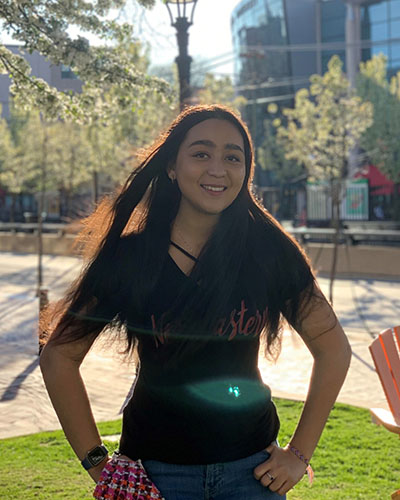 Sydney Maisonet, COE’24, “A Preliminary Study on the Viability and Functionality of f11 Cells in Organs on Chips” Sydney Maisonet, COE’24, “A Preliminary Study on the Viability and Functionality of f11 Cells in Organs on Chips”Mentor: Ryan Koppes, COE, Chemical Engineering In patients receiving vein graft procedures, vascular graft failure contributes significantly to morbidity and mortality. The missing link in vein graft adaptation is the lack of innervation following harvesting. This project aims to address these issues by conducting preliminary studies towards the development of an organ-on-chip which models vascular and neural components to evaluate F11 (neuroblastoma and neuron fusion cell line) morphology. Initially, 3D-culture of F11 Cells will be optimized. The next step will be to develop an organ-on-chip with vascular and nervous components, to evaluate F11 morphology. |
 Myria Scott, COE’23, “Sustainable Pigments for Safer, Non-toxic Hair Coloring” Myria Scott, COE’23, “Sustainable Pigments for Safer, Non-toxic Hair Coloring”Mentor: Leila Deravi, COS, Chemistry & Chemical Biology This project researches pigments used in various applications and tests their effectiveness as pigments for hair dye, while also considering their environmental impact and sustainability. The results of this research will determine a suitable, sustainable pigment source to be used in hair dye and several other cosmetic applications. Synthetic hair dye has been linked to cancer and other health problems while also having a negative impact on the environment. More sustainable pigments are needed to improve the health of the consumer while also the health of the environment. This research will possibly be presented within the Society of Cosmetic Scientists. |
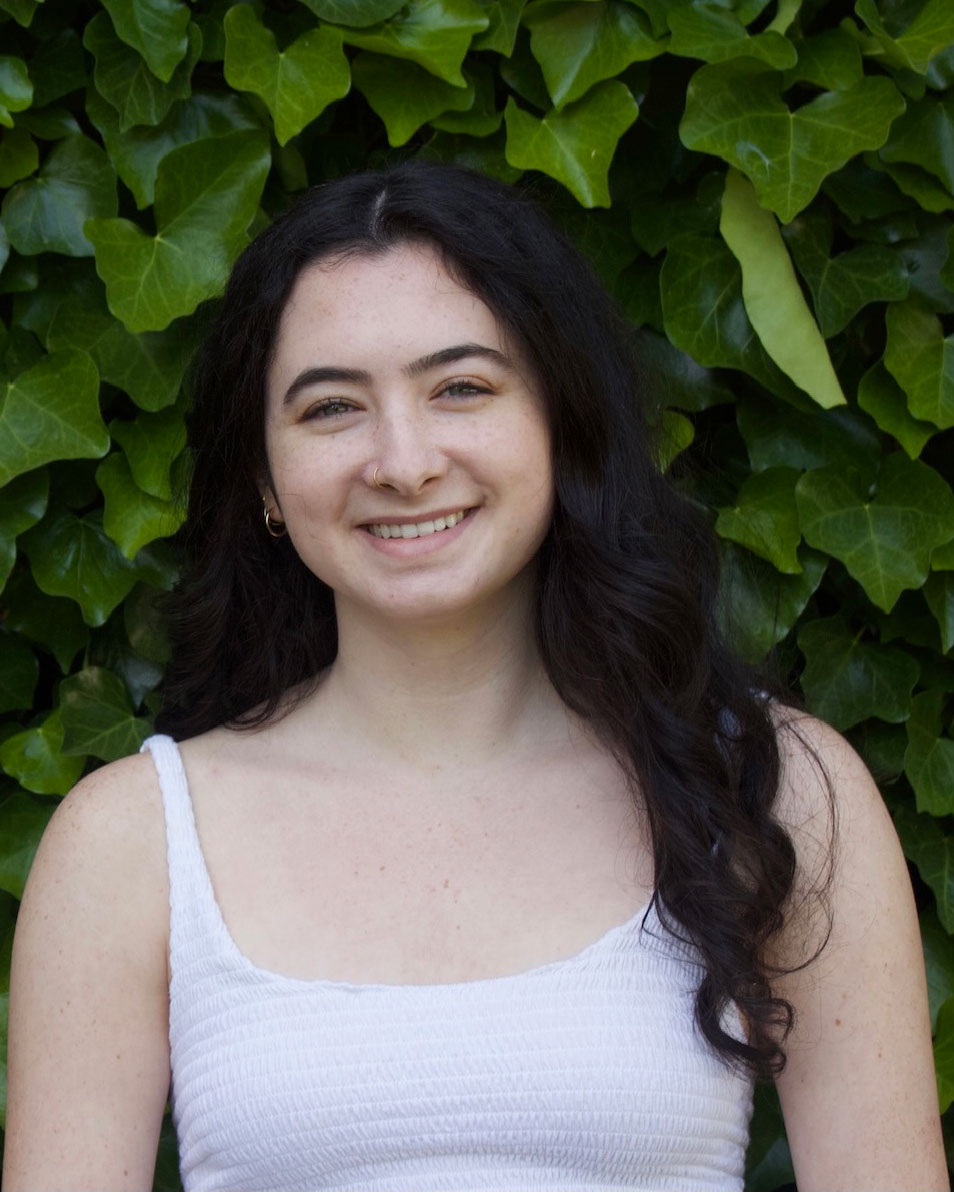 Julianne Shaffer, COE’25, “Case Study Educational Materials for Prototyping in Engineering” Julianne Shaffer, COE’25, “Case Study Educational Materials for Prototyping in Engineering”Mentor: Mark Sivak, CAMD, Mech. & Industrial Engineering This project is aimed at creating case studies to be used to teach prototyping to engineers, with the goal of closing the gaps in understanding between novice and professional engineers. Case studies are commonly used in other industries and are an efficient way to teach students complex applications within their field of study, but there are limited resources available for iterative design topics. |
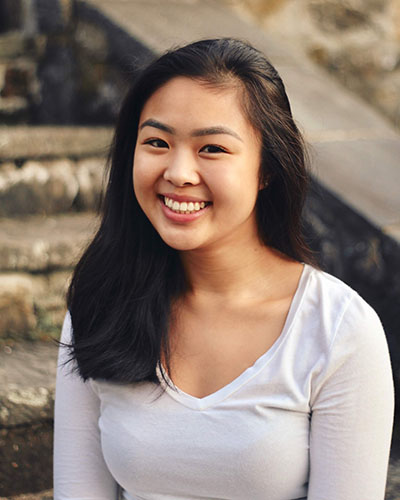 Joyce Shen, COS’23, “Engineering Polyester-Coated Microparticles for Extended Oxygen Release” Joyce Shen, COS’23, “Engineering Polyester-Coated Microparticles for Extended Oxygen Release”Mentor: Sidi Bencherif, COE, Chemical Engineering Hypoxia, or lack of oxygen, is a common characteristic of injury and disease that impedes natural healing and immune responses. The development of oxygen-releasing biomaterials may provide a novel solution by supplementing oxygen to hypoxic tissues. My project aims to fabricate polyester-coated calcium peroxide microparticles that release oxygen from a cryogel biomaterial. Coating the particles with polyester will slow oxygen release in aqueous solutions, controlling and extending the oxygen supply. These engineered particles may lead to enhanced multifunctional biomaterials with promising applications in tissue engineering and immunotherapy. The outcomes will be disseminated through conference presentations and potential journal publications. |
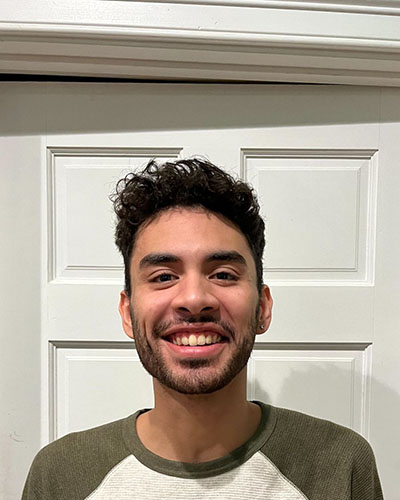 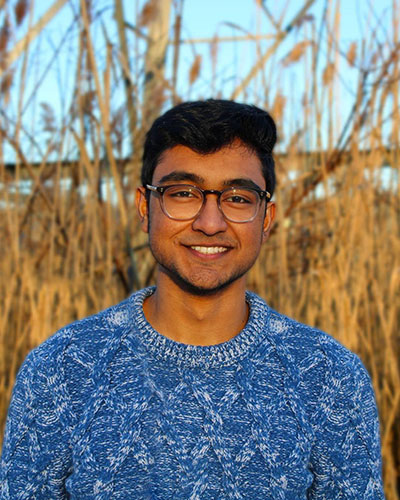 Omar Van Eer, COE’23 and Vivek Kampa, COS’23, “Deployment of Image Analysis Application for C. Elegans” Omar Van Eer, COE’23 and Vivek Kampa, COS’23, “Deployment of Image Analysis Application for C. Elegans”Mentor: Javier Apfeld, COS, Biology This project aims to make the image analysis pipeline developed by Sean Johnsen more accessible to biologists. This imaging pipeline takes in the light intensity of the pharynx of C. elegans when imaged with light at wavelengths 410 nm and 470 nm. The ratio between these two images indicates which parts of the pharynx are oxidized or reduced. The pipeline’s user needs to run several commands in the command prompt to connect to an existing MATLAB installation. This projects aims to subvert this requirement by shipping pre-compiled MATLAB code. This will allow for the development of an easily deployable application. |
| SUMMIT AWARDS |
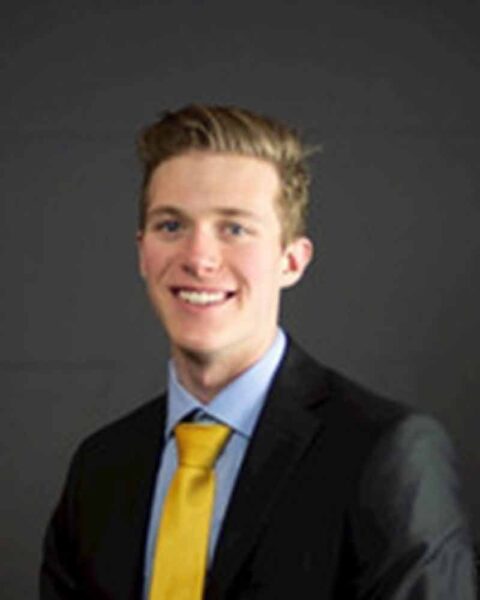 Jonathan Keeley, COE’22, “Mechanically Induced Osteogenesis of Human Mesenchymal Stem Cells in Silk Fibroin Cryogel Scaffolds” Jonathan Keeley, COE’22, “Mechanically Induced Osteogenesis of Human Mesenchymal Stem Cells in Silk Fibroin Cryogel Scaffolds”Mentor: Sidi Bencherif, COE, Chemical Engineering Injectable silk-based cryogels are being investigated as a potential scaffold for stem cells for therapeutic bone regeneration. This project aims to characterize the effects of mechanical compression on the development of cells cultured inside these cryogels from stem cells into bone-like cells to gain insight into how mechanical forces in the body might affect the functionality of this treatment. The results from this project will be presented at RISE and a publication in an academic journal will be pursued. |
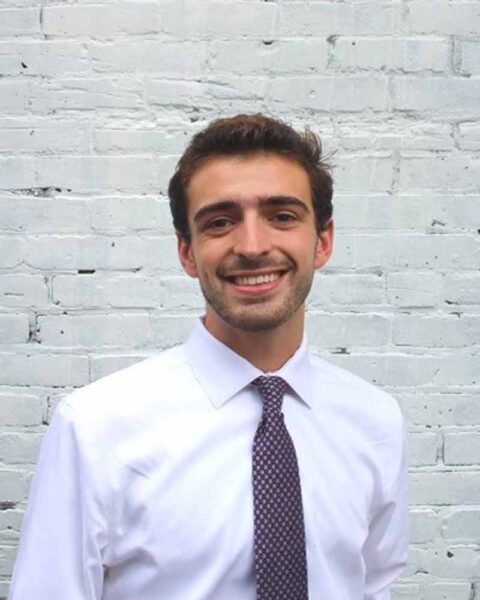 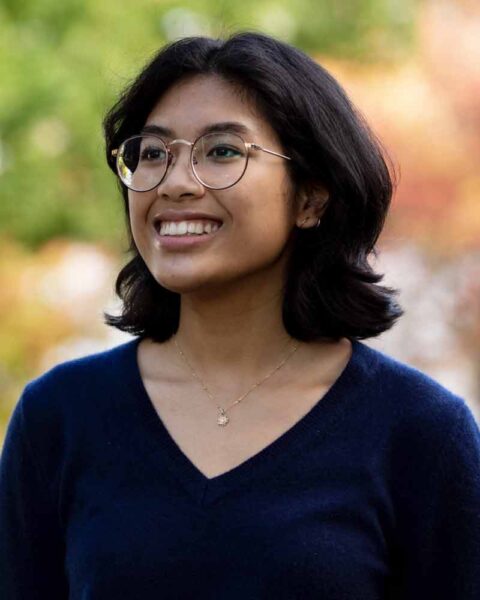 Raymond Milavsky, COE’25 and Gillian Audia, COE’23, “Cleaner Water? Solar Powered? A Novel Fe-Taml Resin Catalyst Water Remediation System Capable of Oxidizing Estrogen Pollutants” Raymond Milavsky, COE’25 and Gillian Audia, COE’23, “Cleaner Water? Solar Powered? A Novel Fe-Taml Resin Catalyst Water Remediation System Capable of Oxidizing Estrogen Pollutants”Mentor: Vasiliki Lykourinou, COS, Chemistry & Chemical Biology The Research Alliance in Science and Engineering (RAISE) is developing a water remediation system to treat estrogenic contamination from agricultural runoff, which has raised concerns for aquatic, environmental, and human health. We have identified Fe-TAML, a green catalyst, for its catalytic activity when paired with hydrogen peroxide to degrade estrogenic contaminants into inert compounds safe for the environment. Our spring research will focus on our system s electrochemical cell to optimize the production of hydrogen peroxide and defining our system s oxidative effectiveness by testing more samples of hydrogen peroxide in solution with our catalyst and pollutant. |
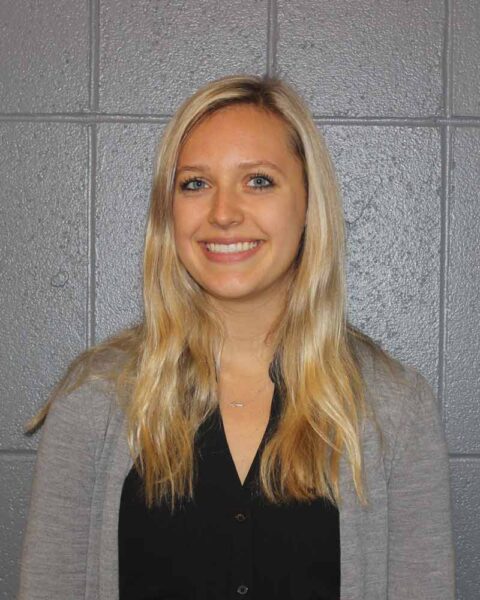 Mila Wawer, COE’22, “Characterization of Blended Cathodes for Lithium-Ion Batteries” Mila Wawer, COE’22, “Characterization of Blended Cathodes for Lithium-Ion Batteries”Mentor: Joshua Gallaway, COE, Chemical Engineering As the need for renewable energy is rapidly increasing, batteries can be optimized through material developments to increase the power output and rate capability. This project will focus on optimizing and characterizing the formulation of a lithium-ion battery cathode using a blend of two prominent active materials, lithium nickel manganese oxide (NMC) and lithium iron phosphate (LFP). NMC is favored because of its high voltage range but is less safe than other materials. LFP is safer and has a better rate capability but has lower voltage ranges. A blend should theoretically combine the best features of each active material. |
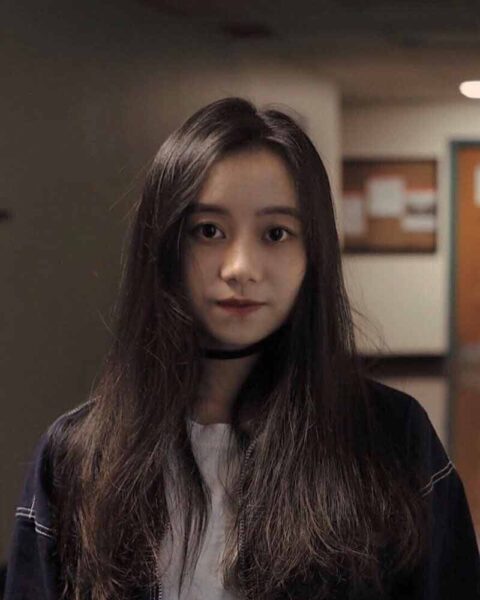 Chloe Wen, COE’22, “Evaluating the Effect of Matrix Stiffness on Glycocalyx Expression Using a Fluidic Device” Chloe Wen, COE’22, “Evaluating the Effect of Matrix Stiffness on Glycocalyx Expression Using a Fluidic Device”Mentor: Sidi Bencherif, COE, Chemical Engineering This project seeks to utilize biomaterial with non-swelling, non-toxic, and tunable properties to mimic different vascular stiffness levels and incorporate it in a fluidic device to evaluate the effect of matrix stiffness on glycocalyx (GCX) expression under flow condition. Results from this study will help to better understand the mechanism of glycocalyx mechanotransduction and the synergistic effect of multiple mechanical signals. GCX expression will be assessed at both gene and protein levels in terms of its glycosaminoglycan chains. Success of proposed project will facilitate future study with more complex conditions. |
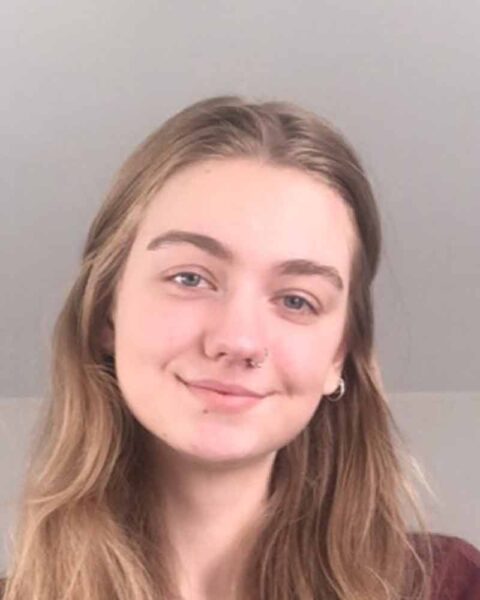 Linnea Wilson, Bouvé’22, “Disparities in Water Service Access in Greater Boston” Linnea Wilson, Bouvé’22, “Disparities in Water Service Access in Greater Boston”Mentor: Kelsey Pieper, COE, Civil & Environmental Engineer There are known water quality differences between private wells and municipal services and documented unequal extension of urban water services into peri-urban areas. The literature acknowledges racial disparities in extension, but is limited to the South. This project seeks to estimate private well locations in Greater Boston and compare national well location models to determine peri-urban water supply uncertainty. Overlaid census data will characterize the demographics of uncertain areas for racial disparities. This will enhance understanding of how Boston municipal water access is extended. The results will be shared at RISE and could be developed into a peer-reviewed publication. |
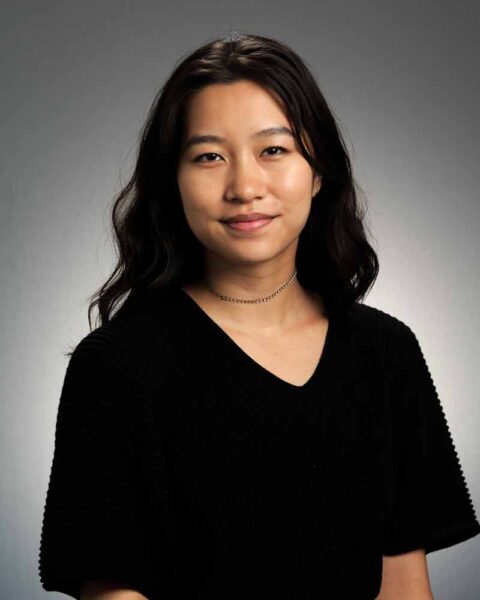 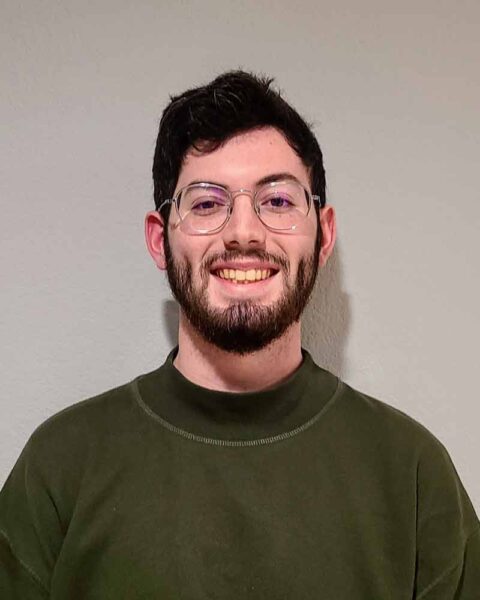 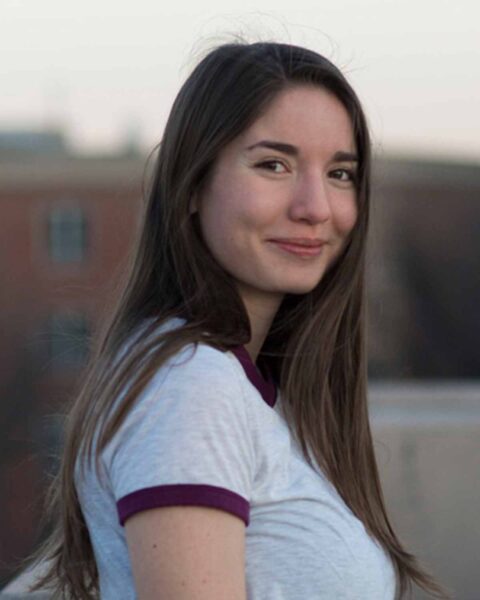 Jocelyn Zhu, COE’22, Omri Leshem, Khoury’24, and Myraeka d’Leeuwen, “Mathematical Modeling of Decision-Making under Transformative Experiences” Jocelyn Zhu, COE’22, Omri Leshem, Khoury’24, and Myraeka d’Leeuwen, “Mathematical Modeling of Decision-Making under Transformative Experiences”Mentor: Rory Smead, CSSH, Philosophy and Religion Some decisions result in experiences in which a person’s preferences are completely transformed. This project seeks to assess the rationality of decision-making in circumstances of “Transformative Experiences” by mathematically modeling changing preferences. This project contributes to important philosophical theories of decision-making, rational choice, and autonomy. Ultimately, this project seeks to use both philosophy and math to create a deeper understanding of human behavior when undergoing change. By sharing an interactive version of the model and synthesizing its research through a website, the project will share the outcomes of its mathematical and philosophical understandings with a larger interdisciplinary community. |